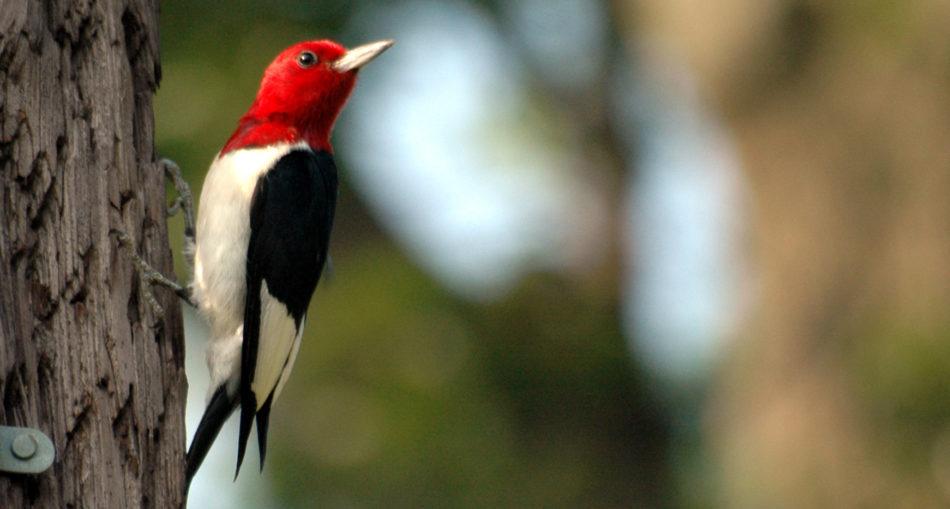The red-headed woodpecker despite not being native to the southern regions of the world has been spotted here during the months from October to around January, but why? The simple reason being it gets VERY cold during those times in the North since that’s winter and they just want to fly away to somewhere warmer where it’s cozier. They’re basically tourists without having to go through the tiring TSA searches. (How lucky is that?)
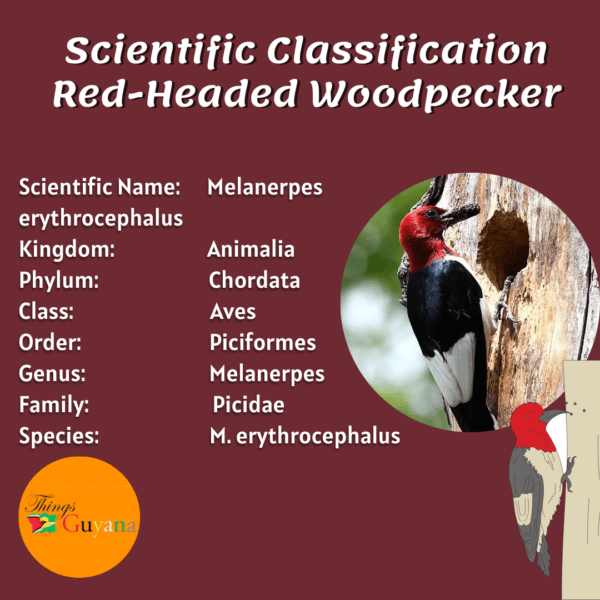
Description
Red-headed Woodpeckers are medium-sized woodpeckers that have strong, spike-like bills (of course to get through the hard bark of trees) , short, stiff tails, and relatively big, rounded heads. Adults have white underparts, black backs, and big white patches on their wings, which, when perched, give the appearance that the lower back is entirely white. The heads of immatures are gray-brown, and rows of black specks can be seen towards the trailing edge of the white wing patches. Adults have a distinct red-coloured head and neck which can be spotted from afar.
red-headed woodpeckers make a calling sound that comes deep from the belly and they don’t even have to open their beaks!
Check out this video of their call:
https://www.youtube.com/watch?v=CmyplLg7ghc
Habitat
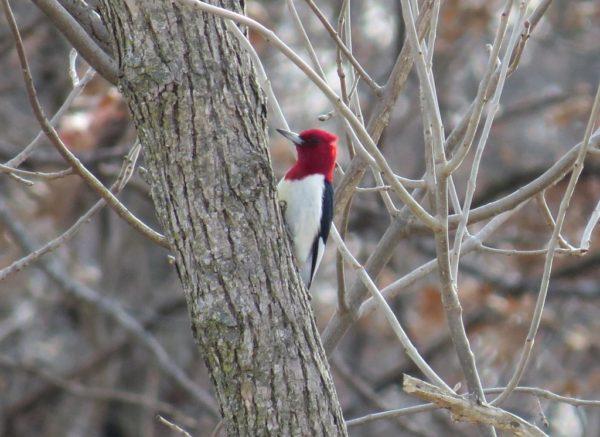
Red headed woodpecker in its habitat. Photo Source: https://www.flickr.com/photos/usfwsmidwest/15951411880
Red-headed Pine savannahs and other open woodlands with transparent understory are home to woodpeckers. Red-headed Woodpeckers are drawn to open pine plantations, tree rows in agricultural regions, standing timber in beaver swamps, and other wetlands.
These birds are usually found in North America, Canada, and some regions of Mexico. However, when it gets chilly they would often fly South for warmth and food. One of those countries is Guyana. I have even been lucky enough to have seen one of these woodpeckers out in the wild.
Diet
The omnivorous red-headed woodpecker consumes a variety of foods, including insects, seeds, fruits, berries, nuts, and, on rare occasions, small rodents, and even other birds’ eggs. Plants make up about two-thirds of its diet. Red-headed woodpeckers would hoard food and make ‘Caches’ which they use to store food to hide away from other species of woodpeckers. (I mean which one of us hasn’t hidden away their good stash of kit-kat from their siblings’ sticky, little hands before? You get it, don’t judge.) They have been known to stuff food in tree cavities, crevices, and under tree bark.
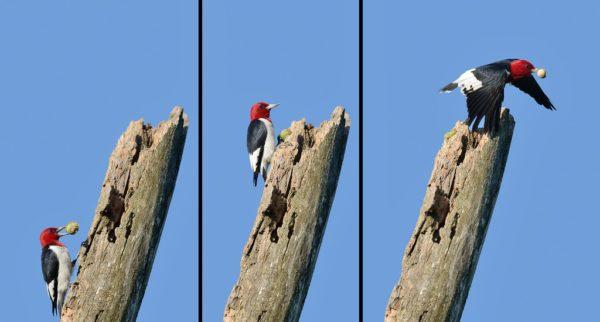
Red-headed woodpecker sneakily stashing away his food in the tree bark. Photo Source: https://www.flickr.com/photos/dharma_for_one/44667544591
Fun Fact: The term caching (rather than hoarding) is mainly used when referring to birds.
Reproduction
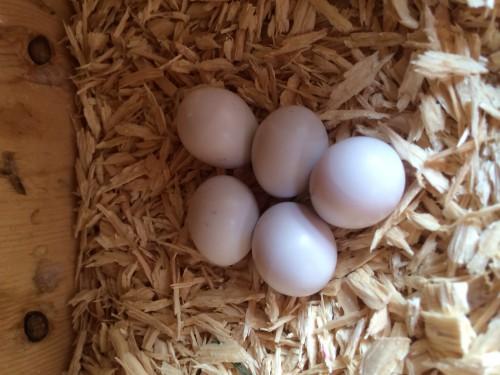
Red-headed woodpecker eggs. Photo Credits: Dale Conway. Photo Source: https://nestwatch.org/connect/home-tweet-home/red-headed-woodpecker/
During the courtship period, the male red-headed woodpecker would call and drum to attract the female. Once this mating ritual would have been successful the relationship is known, for the most part, to be monogamous. The females would choose a spot in which to make their nest but the male does most of the work by drilling out a hole/cavity in the desired spot. The female lays four to seven white eggs in early May and incubates for two weeks. While the male takes control at night, the female incubates the eggs throughout the day. After hatching, both parents take care of the young. Until they are old enough to fly, which typically occurs around 27 to 31 days, the young will remain in the nest.
Ecological Purpose
Red-headed woodpeckers play an important role in the ecosystem they live in. These birds control the insect populations they eat and may help to disperse seeds of various plants that they both eat and cache.
Fun Facts
- During the mating season, the male and female Red-headed woodpeckers often play “hide and seek” with each other around stumps or telephone poles.
- When in the tree Red-headed woodpeckers are able to move upwards, backward, or sideways, but never with their head downwards.
- Red-headed woodpeckers can excavate a cavity measuring up to 7.8-23.5 inches in depth.
References:
- https://animalia.bio/red-headed-woodpecker
- https://en.wikipedia.org/wiki/Red-headed_woodpecker
- https://www.allaboutbirds.org/guide/Red-headed_Woodpecker/id

